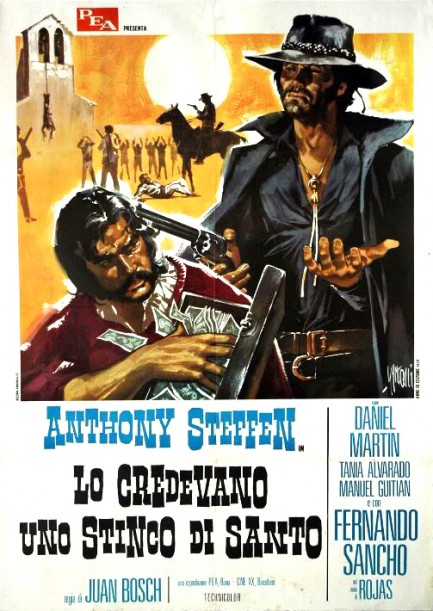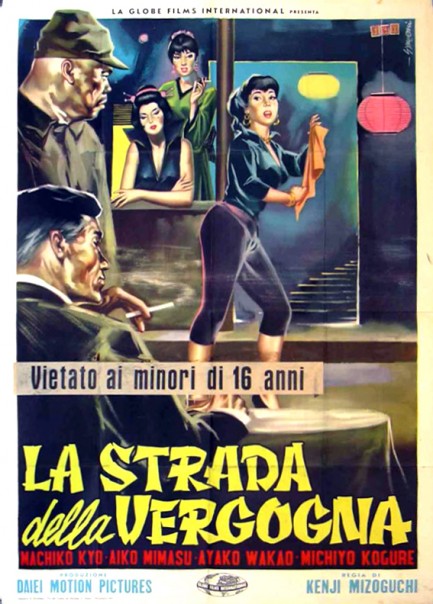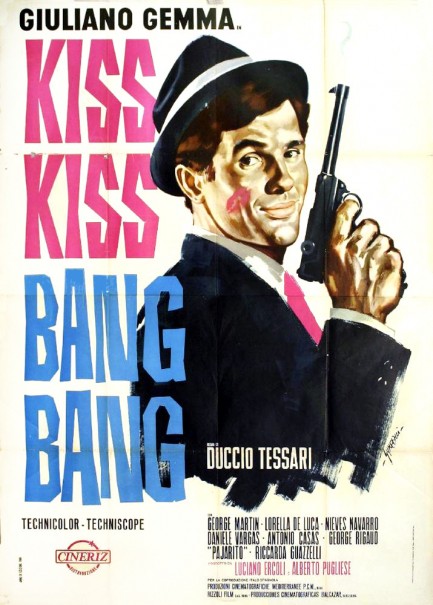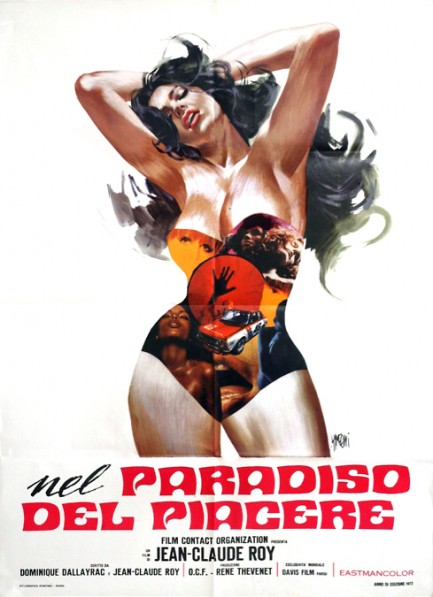 Movie stars were always willing to give each other a hand. 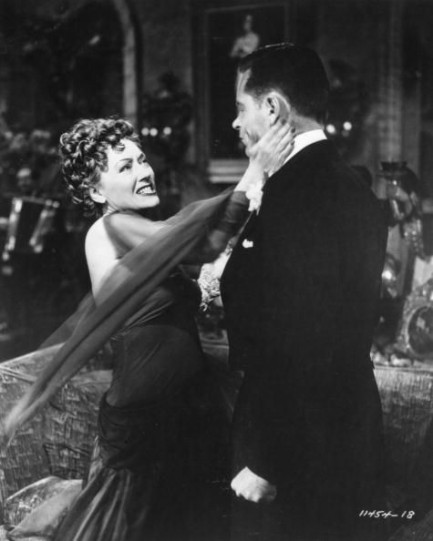
Once again we've been struck, so to speak, by the sheer number of cinema promo images featuring actors and actresses pretending to slap each other. They just keep turning up. The above shot is more about the neck than the face, but it still counts, as Gloria Swanson slaps William Holden in 1950's Sunset Boulevard. Below we have a bunch more, and you can see our previous collection at this link. Since we already discussed this phenomenon we won't get into it again, except briefly as follows: pretend slaps, film is not reality, and everyone should try to remember the difference. Many slaps below for your interest and wonder. 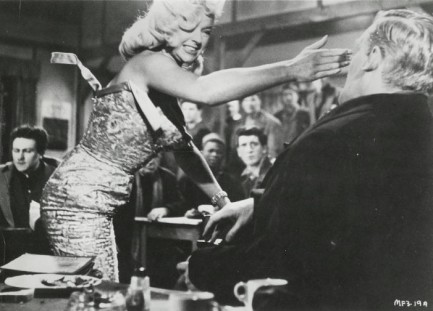 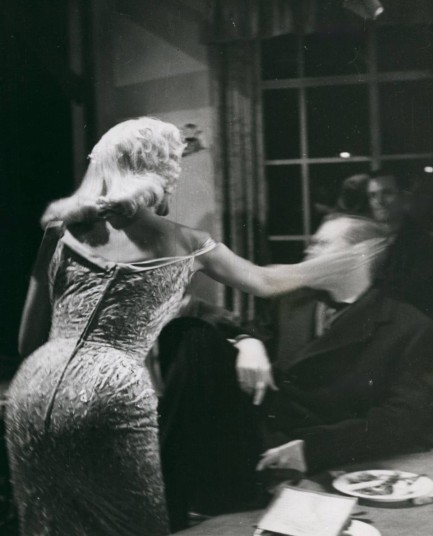 Diana Dors smacks Patrick Allen blurry in 1957's The Long Haul. Diana Dors smacks Patrick Allen blurry in 1957's The Long Haul.
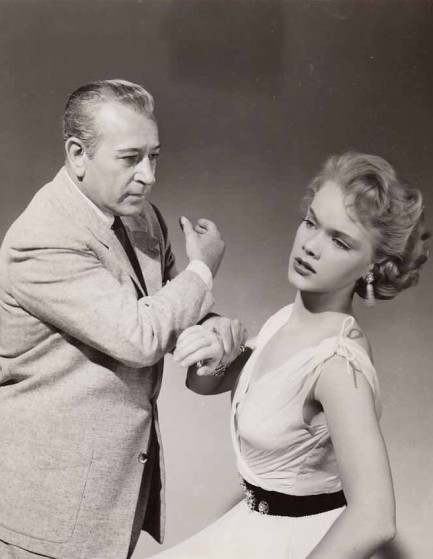 Mob boss George Raft menaces Anne Francis in a promo image made for 1954's Rogue Cop. Mob boss George Raft menaces Anne Francis in a promo image made for 1954's Rogue Cop.
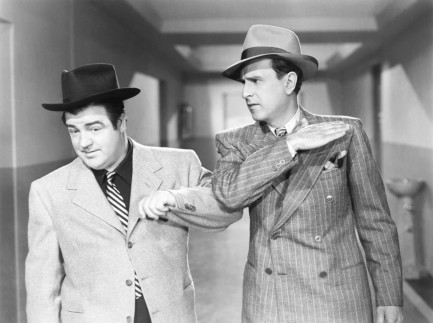 Bud Abbott gets aggressive with Lou Costello in 1945's Here Come the Co-Eds. Bud Abbott gets aggressive with Lou Costello in 1945's Here Come the Co-Eds.
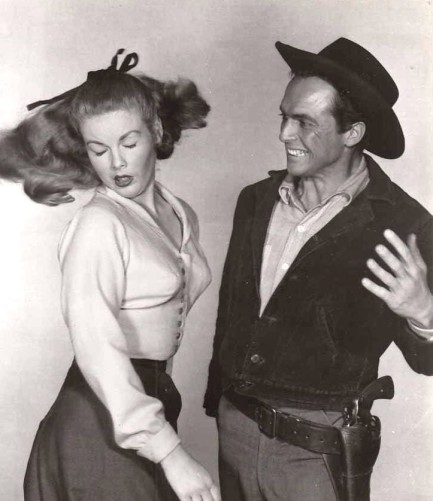 Jo Morrow takes one from black hat Jack Hogan in 1959's The Legend of Tom Dooley. Jo Morrow takes one from black hat Jack Hogan in 1959's The Legend of Tom Dooley.
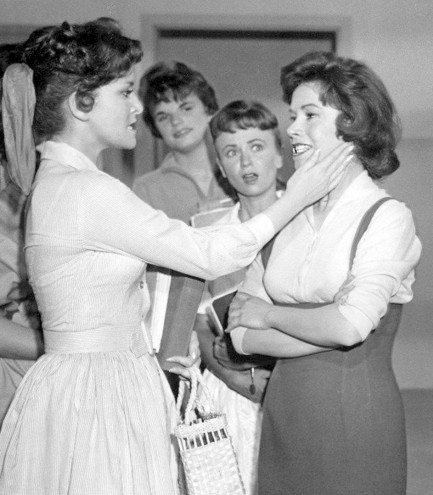 Chris Robinson and Anita Sands get a couple of things straight about who's on the yearbook committee in Diary of High School Bride. Chris Robinson and Anita Sands get a couple of things straight about who's on the yearbook committee in Diary of High School Bride.
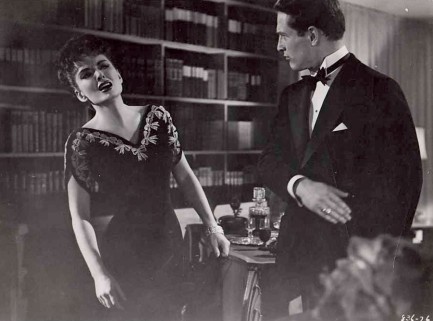 Paul Newman and Ann Blyth agree to disagree in 1957's The Helen Morgan Story. Paul Newman and Ann Blyth agree to disagree in 1957's The Helen Morgan Story.
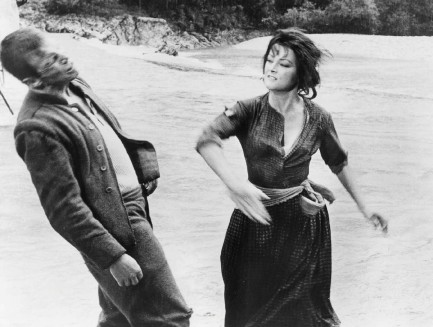 Verna Lisi shows Umberto Orsini who gives the orders in the 1967 film La ragazza e il generale, aka The Girl and the General. Verna Lisi shows Umberto Orsini who gives the orders in the 1967 film La ragazza e il generale, aka The Girl and the General.
 What the fuck did you just call me? Marki Bey slaps Betty Anne Rees loopy in the 1974 horror flick Sugar Hill. What the fuck did you just call me? Marki Bey slaps Betty Anne Rees loopy in the 1974 horror flick Sugar Hill.
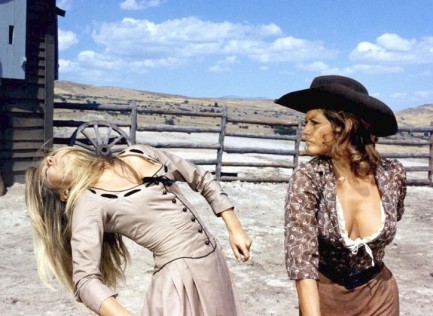 Claudia Cardinale slaps (or maybe punches—we can't remember) Brigitte Bardot in the 1971 western Les pétroleuses, known in English for some reason as The Legend of Frenchie King. Claudia Cardinale slaps (or maybe punches—we can't remember) Brigitte Bardot in the 1971 western Les pétroleuses, known in English for some reason as The Legend of Frenchie King.
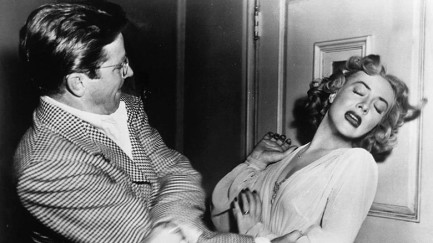 Audrey Totter reels under the attentions of Richard Basehart in 1949 Tension. We're thinking it was probably even more tense after this moment. Audrey Totter reels under the attentions of Richard Basehart in 1949 Tension. We're thinking it was probably even more tense after this moment.
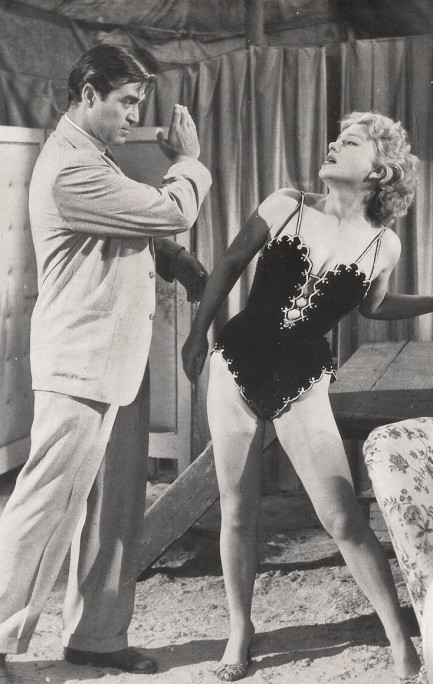 Anne Baxter tries to no avail to avoid a slap from heel Steve Cochran in 1954's Carnival Story. Anne Baxter tries to no avail to avoid a slap from heel Steve Cochran in 1954's Carnival Story.
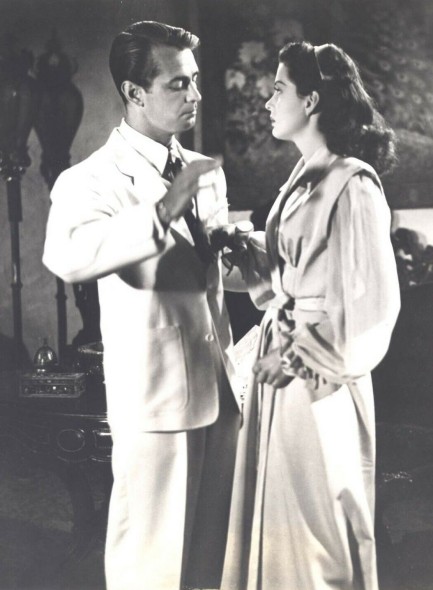 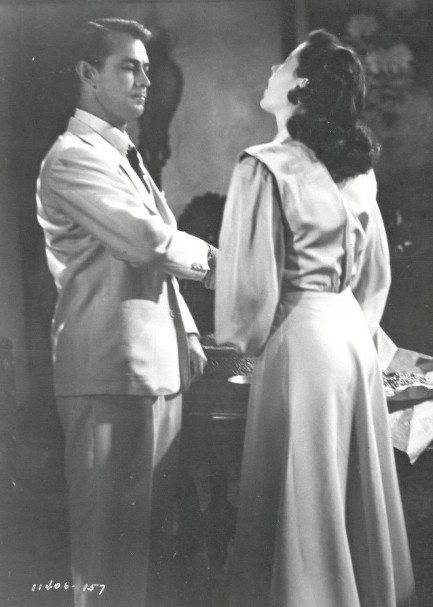 Though Alan Ladd was a little guy who Gail Russell probably could have roughed up if she wanted, the script called for him to slap her, and he obeyed in the 1946 adventure Calcutta. Though Alan Ladd was a little guy who Gail Russell probably could have roughed up if she wanted, the script called for him to slap her, and he obeyed in the 1946 adventure Calcutta.
 Peter Alexander guards his right cheek, therefore Hannelore Auer crosses him up and attacks his left in 1964's Schwejk's Flegeljahre, aka Schweik's Years of Indiscretion. Peter Alexander guards his right cheek, therefore Hannelore Auer crosses him up and attacks his left in 1964's Schwejk's Flegeljahre, aka Schweik's Years of Indiscretion.
 Elizabeth Ashley gives Roddy McDowall a facial in in 1965's The Third Day. Elizabeth Ashley gives Roddy McDowall a facial in in 1965's The Third Day.
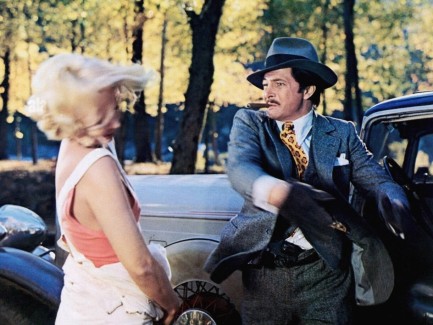 Tony Anthony slaps Lucretia Love in 1972's Piazza pulita, aka Pete, Pearl and the Pole. Tony Anthony slaps Lucretia Love in 1972's Piazza pulita, aka Pete, Pearl and the Pole. 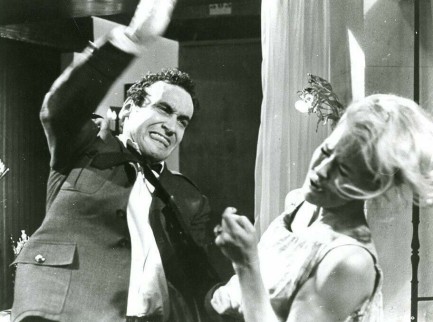 André Oumansky goes backhand on Lola Albright in 1964's Joy House. André Oumansky goes backhand on Lola Albright in 1964's Joy House.
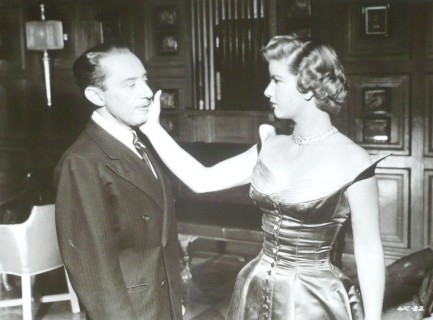 Frank Ferguson catches one from Barbara Bel Geddes in the 1949 drama Caught. Frank Ferguson catches one from Barbara Bel Geddes in the 1949 drama Caught.
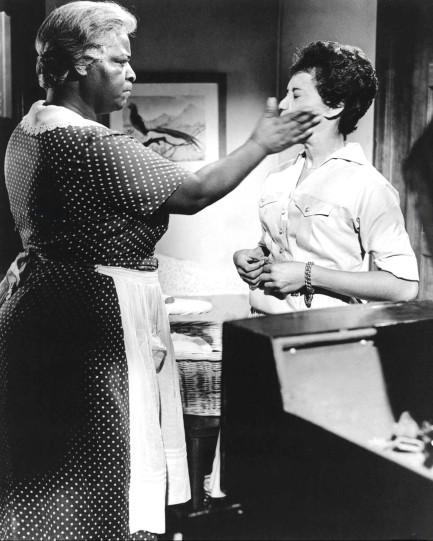 This looks like a real slap, so you have to credit the actresses for their commitment. It's from 1961's Raisin in the Sun and shows Claudia McNeil rearranging the face of Diana Sands. This looks like a real slap, so you have to credit the actresses for their commitment. It's from 1961's Raisin in the Sun and shows Claudia McNeil rearranging the face of Diana Sands.
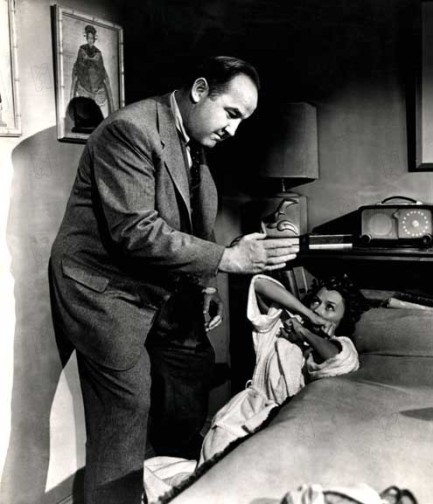 Gloria Grahame finds herself cornered by Broderick Crawford in 1954's Human Desire. Gloria Grahame finds herself cornered by Broderick Crawford in 1954's Human Desire.
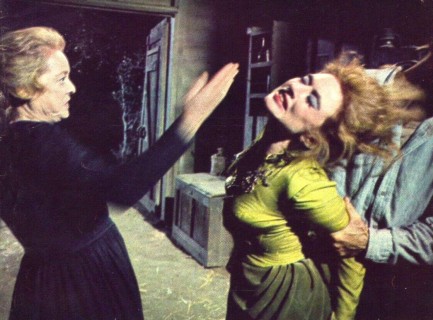 Bette Davis, an experienced slapper and slappee, gets a little assistance from an unidentified third party as she goes Old West on Amanda Blake in a 1966 episode of Gunsmoke called “The Jailer.” Bette Davis, an experienced slapper and slappee, gets a little assistance from an unidentified third party as she goes Old West on Amanda Blake in a 1966 episode of Gunsmoke called “The Jailer.”
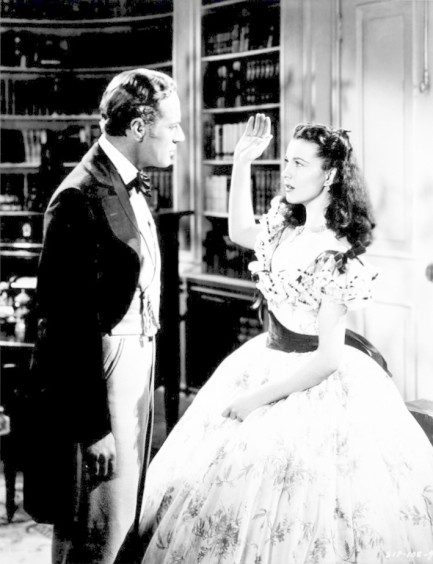 There are a few slaps in 1939's Gone with the Wind, so we had our pick. We went with Vivien Leigh and Leslie Howard. There are a few slaps in 1939's Gone with the Wind, so we had our pick. We went with Vivien Leigh and Leslie Howard.
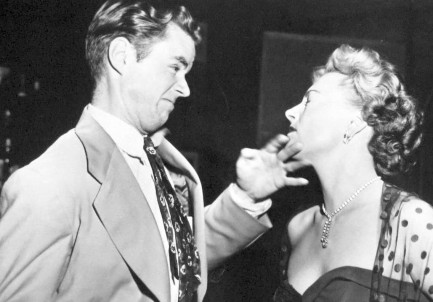 Virginia Field takes one on the chin from Marshall Thompson in Dial 1119. Virginia Field takes one on the chin from Marshall Thompson in Dial 1119.
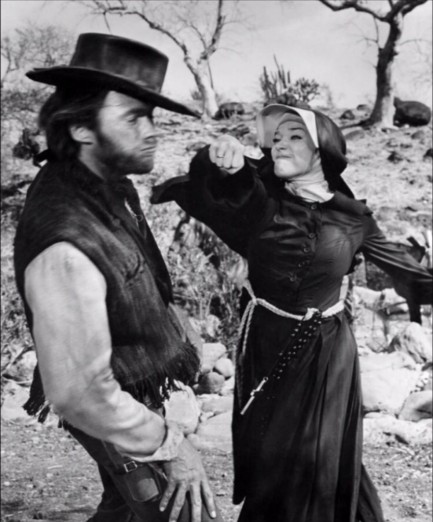 Clint Eastwood absorbs a right cross from nun Shirley MacLaine in 1970's Two Mules for Sister Sara. Clint Eastwood absorbs a right cross from nun Shirley MacLaine in 1970's Two Mules for Sister Sara.
 It's not comfortable, but it's reliable. 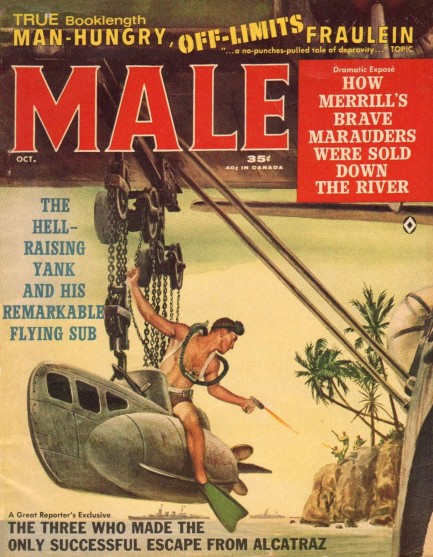
We're back to men's adventure mags today with an issue of Male from this month in 1962, with cover art by Mort Kunstler illustrating the tale, “The Hell-Raising Yank and His Remarkable Flying Sub.” We gave the story a read and it tells of Walter R. Cook, a U.S. soldier stranded in Burma who, with the aid of a local beauty (of course), finds and refurbishes an abandoned Catalina seaplane, which has attached to it a two man submarine. The sub was a type used during World War II that the operators rode like horses while breathing through scuba gear. Cook uses it to disrupt Japanese supply lines.
The story is a standard sort for an adventure magazine, but educational, since we'd never heard of rideable submarines. The illustration makes clear exactly what form it took. The magazine also offers stories set in China and New Zealand, and contains a detailed piece on an escape from Alcatraz, the very escape that inspired the Clint Eastwood film Escape from Alcatraz, involving the inmate Frank Morris, who may or may not have actually succeeded. The art throughout the issue is from the usual suspects—Charles Copeland, Samson Pollen, and Bruce Minney—and is tops as always. We have seventeen scans below.
 Dark on the outside, darker on the inside. 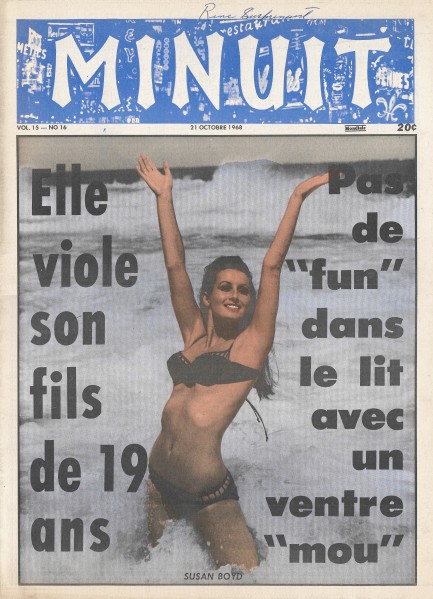
This is the second Canadian tabloid we've shared in October, and we have several others upcoming in the next few months. This time we're back to Minuit, the sister publication of Midnight, published today in 1968 with a cover featuring Susan Boyd. She's looking a little radioactive, and in unusually dark waters. This could everyone's fate the way things are going in 2022. We don't know what Minuit editors were shooting for here. Maybe they had a problem during the printing phase. But in it an odd way it's actually a nice cover, and Boyd pops up again in the centerfold, looking much healthier. Elswewhere inside the issue Minuit wastes no time with its efforts to shock. We learn about Vietmanese youngster Bon Ngoc Tho, who editors claim is a demi-homme born with many characteristics of his father—a monkey. We can say a lot about this, but let's skip most of it and simply note that the 1960s were the tail end, so to speak, of a long-running fascination with supposed human freaks.
Moving on, editors have a curious photo of a model with something unidentifiable in her mouth. We took several guesses what the thing was, and they were all wrong. Turns out it's a pea shooter—a tire-pois. No, we'd never seen one, but a few of you probably recognized it. Minuit editors claim it can kill a kid, and that hospitals around the U.S. have been treating serious pea shooter injuries, along with wounds inflicted by “blow zappers and Zulu-guns.” The article explains that the injuries come not from shooting the projectiles, but from swallowing them while inhaling to fire the weapon, occasionally piercing arteries in the neck.
There are more stories along those lines, but it isn't all dark at midnight. Elsewhere in the issue you get men's fitness, nymphomania, and plenty of celebs, such as Claudia Cardinale, Nai Bonet, and Maureen Arthur, plus Robert Vaughn hawking a 100% legitimate Man from U.N.C.L.E. “plume espion.” That means “spy feather,” which doesn't help at all in determining exactly what it is. But a careful scan of the text suggests that it's an x-ray vision device that works on everything from walls to clothes. Right. We'll take two, and see you at the beach. Twenty-one scans below.
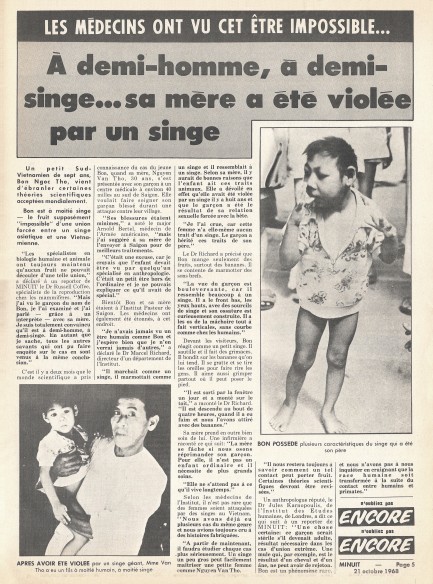 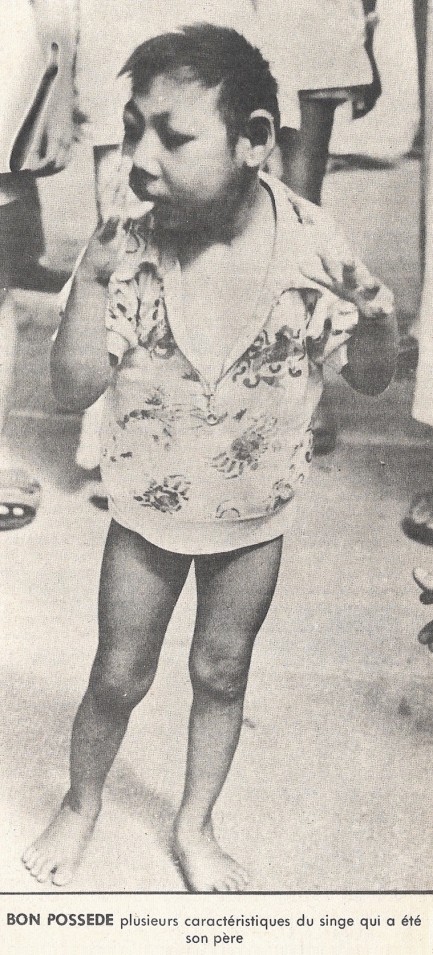 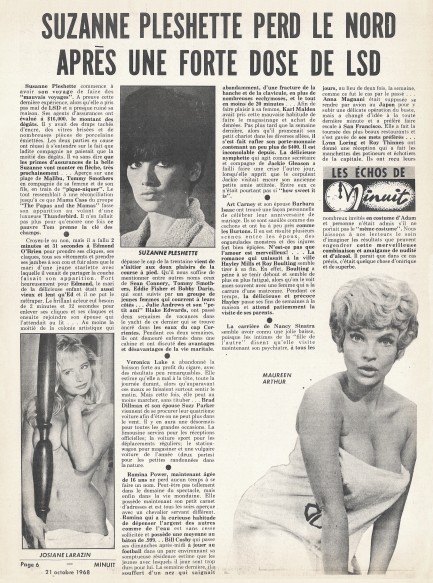  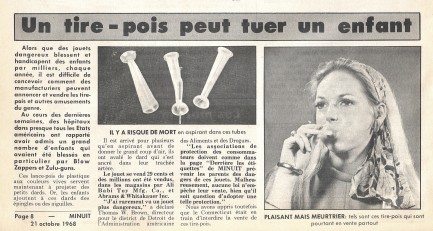 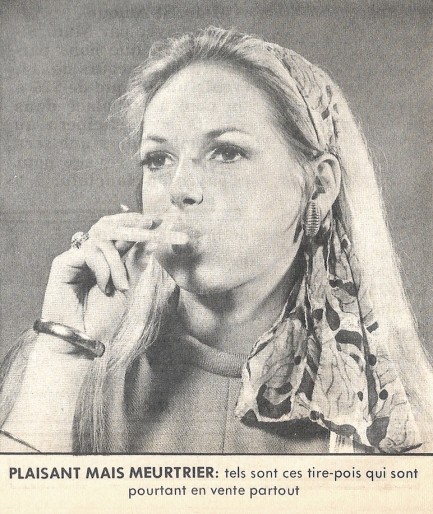 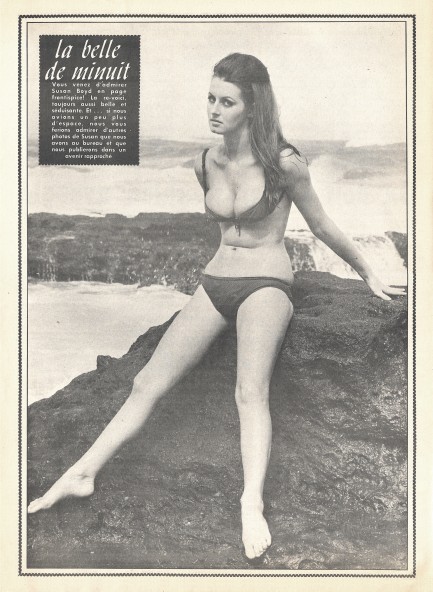 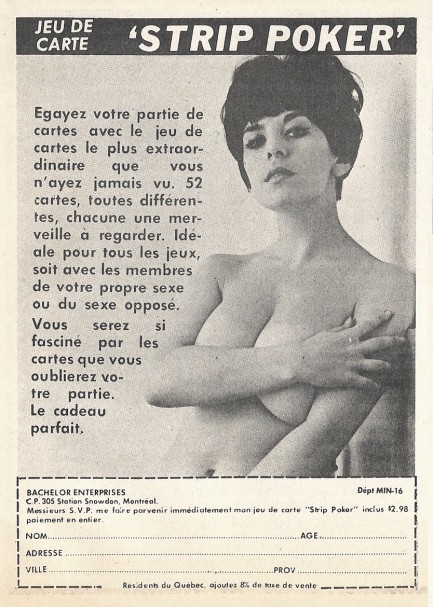 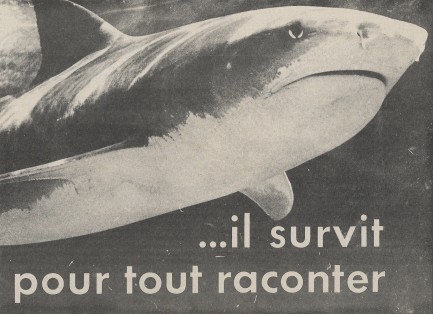 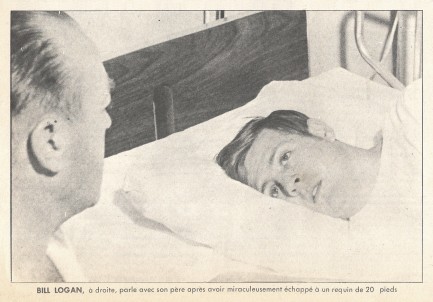 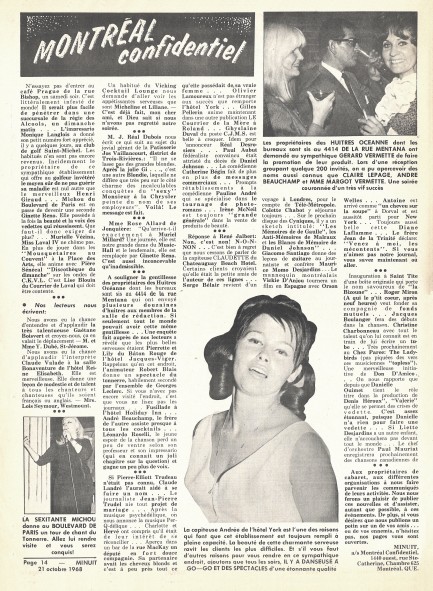 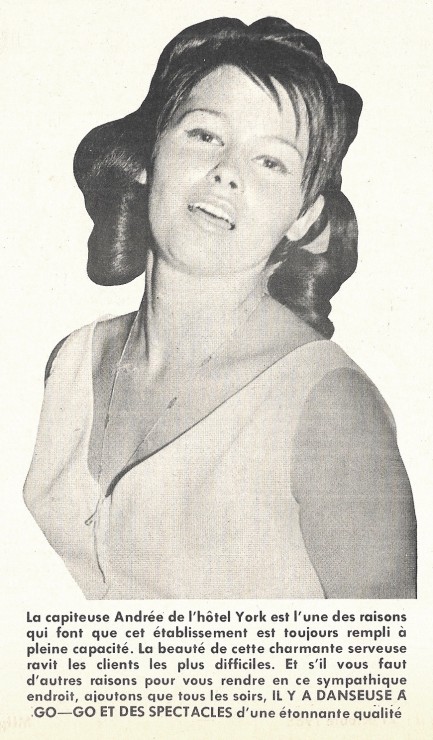 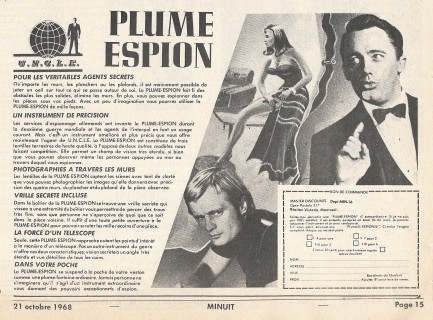 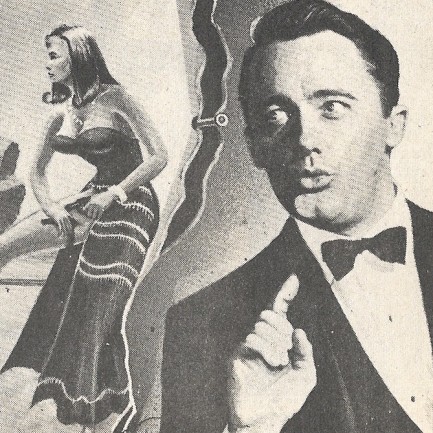 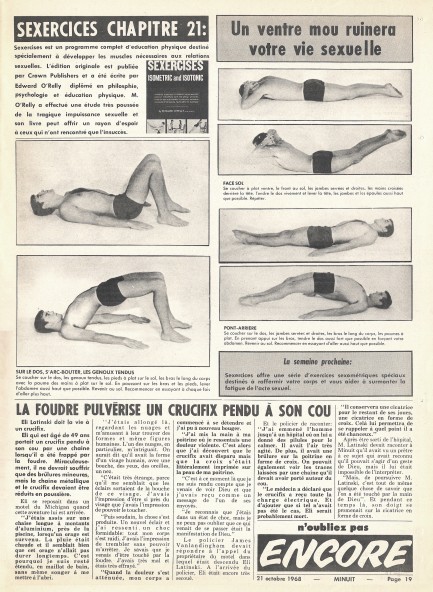 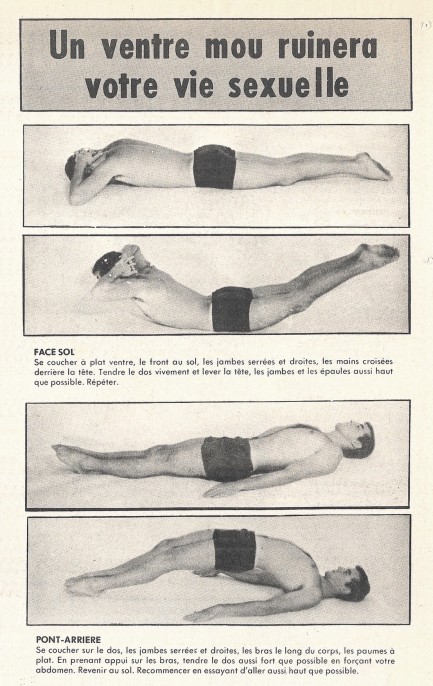  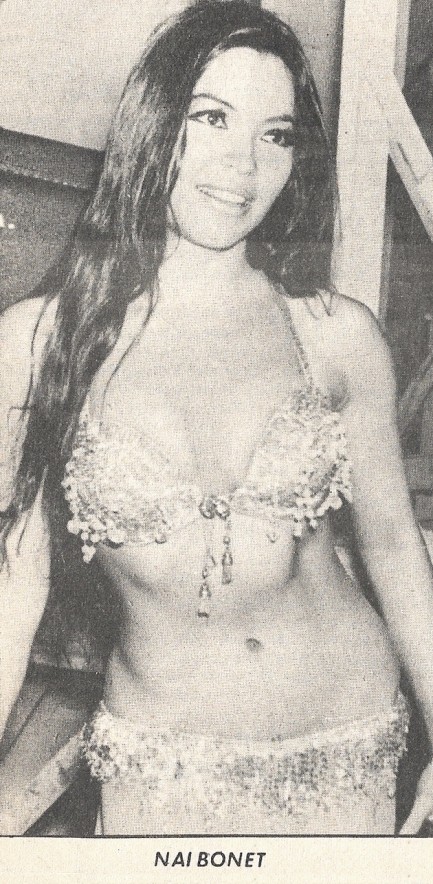 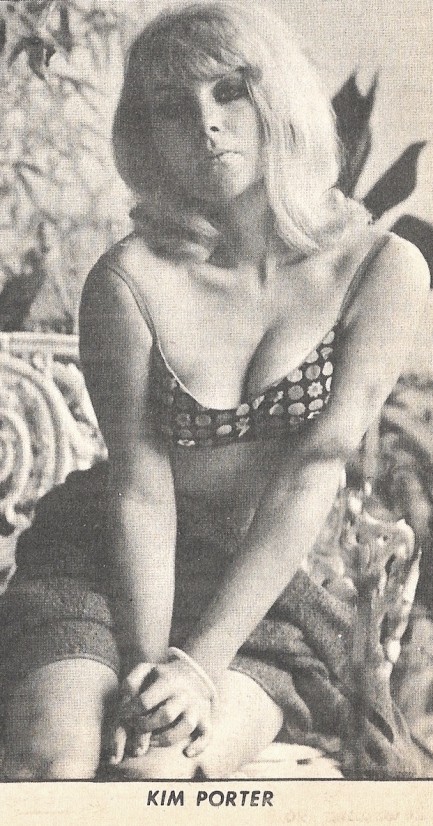 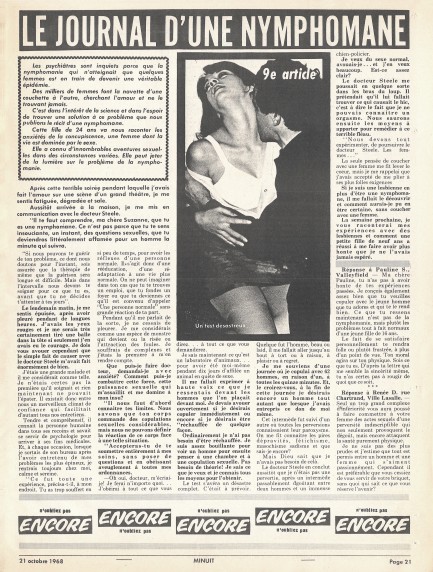 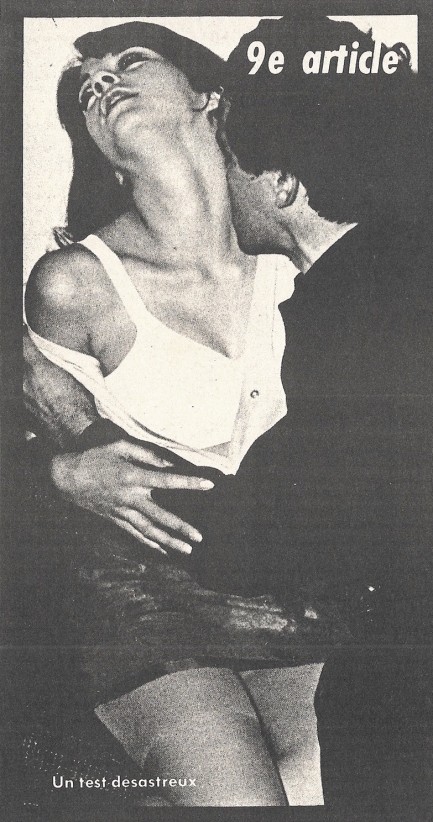
 French magazine celebrates essential American film genre. 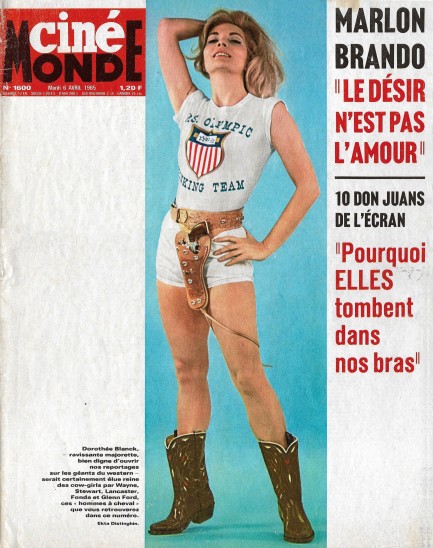
A few years ago we used this image of German actress Dorothée Blanck as a femme fatale, but didn't scan the rest of the magazine in which we had found her. By now you know why—the pages of these old film mags are large and we have to scan them in halves and put them together in Photoshop or GIMP, which is time consuming, something that's a real problem for lazy people like us. But here we are three years later and we've finally done it. Above is the full cover of the issue of Cinémonde—“cineworld” in English—from which Blanck came.
Cinémonde was first published in October 1928 and ran until being interrupted by World War II in 1940. Post hostilities the magazine reappeared, running from 1946 until 1968, taking another pause, running again from 1970 to 1971, and finally folding for good. This issue hit newsstands today in 1965. Like other European magazines of the era, the main attraction with Cinémonde is that its photos generally have not been seen online before. This issue was devoted to the American western, and the subjects include some of the biggest cowboy stars in cinema history, including John Wayne, Glenn Ford, Clint Eastwood, and Jimmy Stewart.
That's the first half of the issue. Afterward editors move outside the western milieu, and you get Marlon Brando, David Niven, Francois Dorléac, Barbara Bouchet, Serge Gainsbourg, hair secrets of the stars, the top ten Don Juans of French cinema, and more. Do we have other issues of this magazine? You bet. We own a group that includes Cinémonde, Ciné-Revue, and others. Will we ever scan them? Well, we make no promises at this point, but you never know—maybe we'll splash out for a bigger scanner and solve the problem with money instead of effort. Seems to work for everyone else. Thirty plus images below.
 She upgraded from broomsticks and black capes a long time ago. 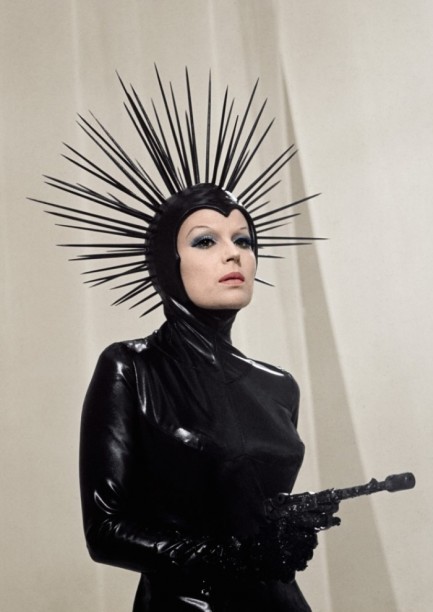
This promo photo was made for the Italian anthology movie Le streghe, aka The Witches, and shows Italian actress Silvana Margano in costume as Giovanna, a bored housewife who imagines herself in elaborate fantasies. This particular fever dream, in the segment called “Una serata come le altre,” or “An Evening Like the Others,” lasts mere seconds, but Margano still makes an impression in her futuristic femme fatale garb. The segment is also memorable because it was directed by Vittorio de Sica and featured Clint Eastwood, but Margano was the star of the movie, appearing in all five witch-related portions as different characters. We may get back to it at some point. This photo is from 1967.
 Famed movie cemetery rises from the dead. 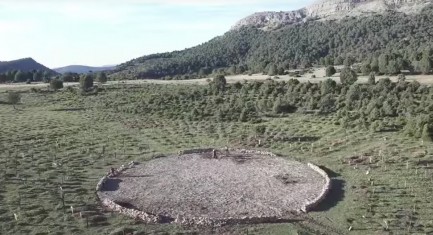
Spaghetti westerns earned their name because they generally premiered in Italy and the studios that financed them were usually Italian, but the films were often predominantly shot in Spain. The climax of The Good, the Bad and the Ugly, with its unforgettable three-way gunfight between Clint Eastwood, Eli Wallach, and Lee Van Cleef, was shot outside the town of Santo Domingo de Silos, Spain, in the province of Burgos, in a unique circular cemetery put together by set builders. In the script it was called the Sad Hill Cemetery. After the shoot Sad Hill was abandoned, and soon nature began to overtake the set.
That would have been the end of the story, but a group of film fans calling themselves the Sad Hill Cultural Association decided Sad Hill was a historic film treasure deserving of resurrection, and pledged to rescue it from oblivion. Toiling in their spare time, they labored with pick, hoe, and shovel to clear the site. They needed money to accomplish the work, so they set up a crowdfunding campaign with a unique enticement—those who contributed would have their names inscribed on the restored grave markers. The restoration efforts are finally complete, and the famous graveyard has been returned to its former state.
Spanish filmmaker Guillermo de Oliveira shot a documentary about the salvation efforts, and hopes to release a film titled Sad Hill Unearthed. He's now trying to raise money to pay for the rights to clips and music from The Good, the Bad and the Ugly, with the plan to premiere the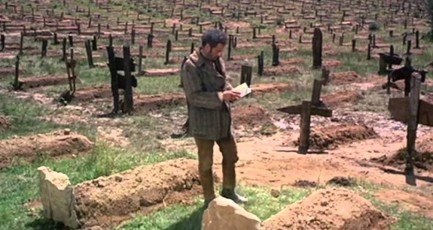 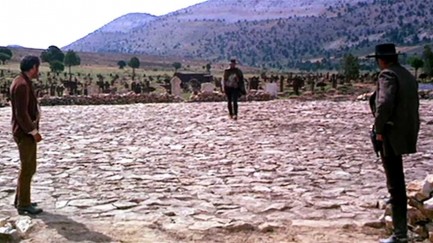 finished product at film festivals and share the restorer's unique dedication with the world. Meanwhile Sad Hill will become not only a tourist attraction for people passing through the province of Burgos, but a destination for those who contributed to its renewal. As Oliveira commented, “It’s the only cemetery in the world where you can visit your own grave.” finished product at film festivals and share the restorer's unique dedication with the world. Meanwhile Sad Hill will become not only a tourist attraction for people passing through the province of Burgos, but a destination for those who contributed to its renewal. As Oliveira commented, “It’s the only cemetery in the world where you can visit your own grave.”
 Eastwood tries to teach a new dog old tricks. 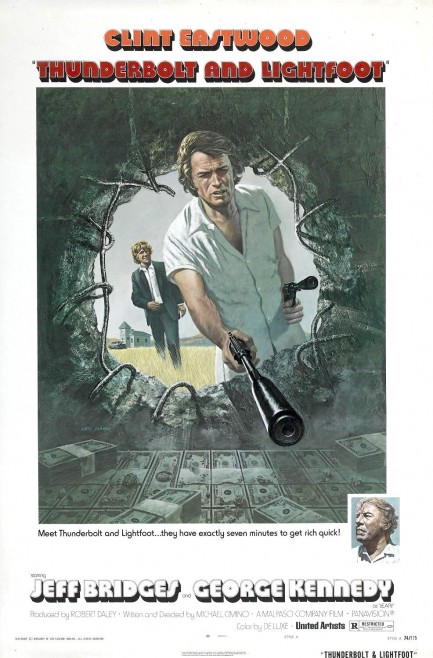
Squirrelly young criminal Lightfoot, played by Jeff Bridges, is just the kind of guy you want to smack. Always running his mouth, never paying attention, totally wrapped up in himself. He picks up John Doherty, played by the older Clint Eastwood, and the two form a bromance. During their travels, Lightfoot learns that Doherty is a famed bank robber known as the Thunderbolt, for his usage of an anti-aircraft cannon to penetrate a bank vault. Thunderbolt has two ex-partners on his trail who are seeking a cache of hidden money from a previous job. The money is hidden behind a blackboard in an old, one-room schoolhouse, but when Thunderbolt and Lightfoot travel to the site of the school it's been replaced a modern new building.
The angry ex-partners eventually corral Thunderbolt and Lightfoot, but when they learn the money is gone, rather than exact revenge, they decide to pull off the same job, the same way, and maybe the loss of the other cash will be forgiven. The only snag is they have no way to finance the robbery—particularly the acquisition of another cannon. So they do what any career criminals would do—get jobs. They drive an ice cream truck, groom dogs, anything to earn cash. The question is never really whether they'll finance the heist, but whether their fragile coalition—which is strained by mistrust from the loss of the previous bank loot, as well as by Lightfoot's grating antics—can hang together.
Jeff Bridges' Oscar nominated performance is a reminder that Millennial, Generation X, Beat Generation, et al, are just marketing terms used for social engineering. Every young generation is infuriating to the older ones. It's genetic, not social. Lightfoot is impatient, oblivious, and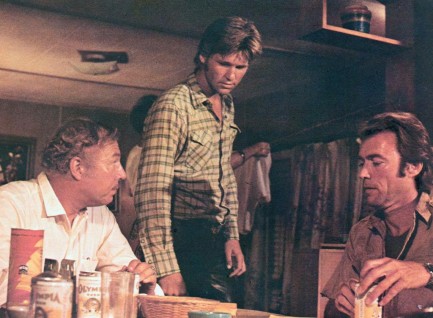 rude—like someone raised on mobile devices, only decades before those existed for people to focus their ire upon. A constant underlying concern is whether he will finally go too far and get his ass seriously beaten, or maybe even get killed. He's likeable, of course, but he's also a protagonist. If you met him on the street you'd wonder if he was ever dropped on his head as an infant—and then proceed to drop him on his head. And no—he doesn't turn out to be secretly a criminal genius. He's exactly the constant annoyance he seems. rude—like someone raised on mobile devices, only decades before those existed for people to focus their ire upon. A constant underlying concern is whether he will finally go too far and get his ass seriously beaten, or maybe even get killed. He's likeable, of course, but he's also a protagonist. If you met him on the street you'd wonder if he was ever dropped on his head as an infant—and then proceed to drop him on his head. And no—he doesn't turn out to be secretly a criminal genius. He's exactly the constant annoyance he seems. Though Thunderbolt and Lightfoot isn't film noir, it's full spectrum entertainment, with laughs, thrills, and a touch of sex, as well as just enough menace to keep viewers on edge. But we don't think Noir City patrons will walk away from the screening 100% pleased. We get that they're being asked to think outside the box, but there's a pretty wide gap between noir, with its beautiful visual palette and nostalgia invoking cultural stature, and a ’70s road thriller, with its dusty look and twangy country music soundtrack. Thunderbolt and Lightfoot is a great movie in the wrong festival, in our view. As a side note, the promo poster, which we're sure you've noticed is high quality, was painted by Ken Barr, who was a respected comic book and promo artist for many years. You can read a bit more about him here. 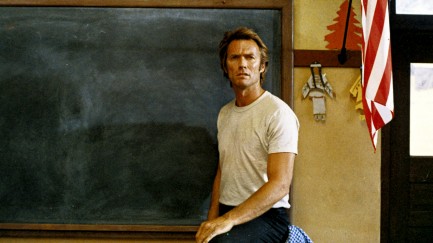 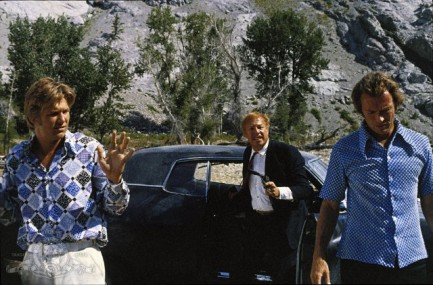 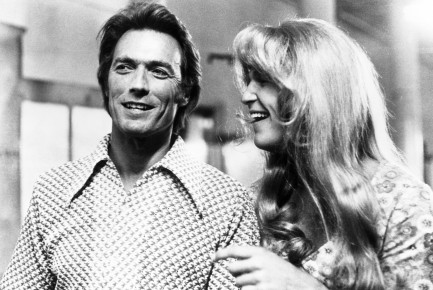 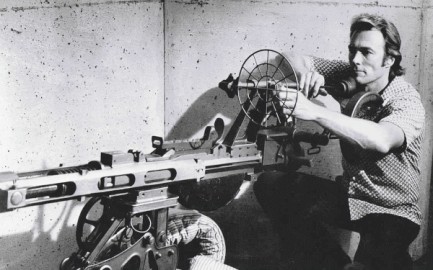
 Who needs a name when none of your enemies survive to remember it anyway? 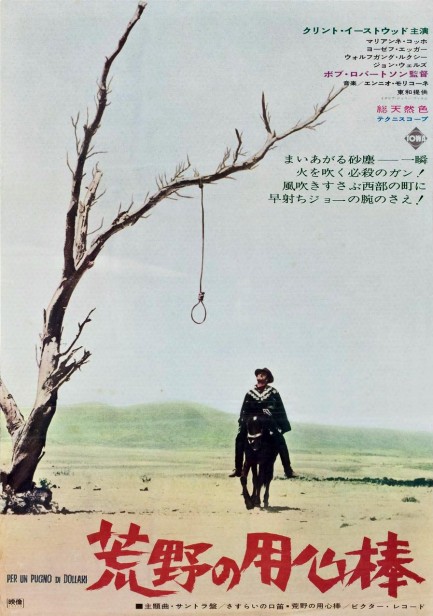 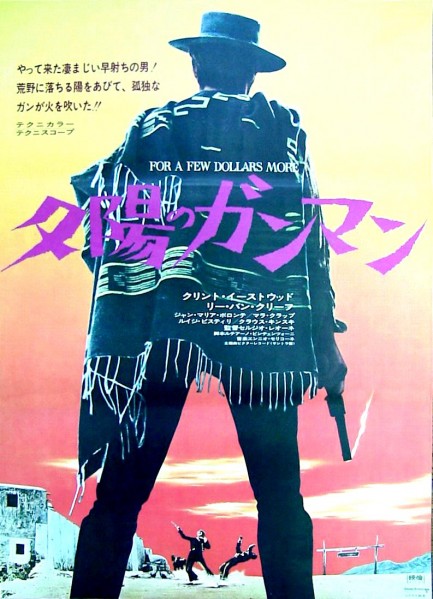 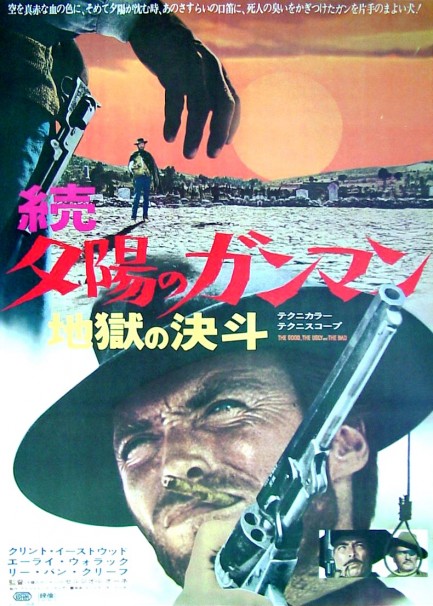
There are precious few movies that truly age well, and far fewer series. But like the Clint Eastwood spaghetti western series colloquially known as the Man with No Name Trilogy, these Japanese posters have stood the test of time. From top to bottom they are for A Fistful of Dollars, aka Koya no yojimbo, For a Few Dollars More, aka Yuuhi no ganman, and The Good, the Bad, and the Ugly, aka Zoku yuuhi no ganman. There are some who say Eastwood’s character actually has a name in these films, but we beg to differ. In the first he’s referred to once as Joe, which is a name, yes, but more likely is a tag, like calling him “hotshot,” or “buddy.” In the second he’s referred to as Manco, which colloquially means “one armed” in Spanish. And in the third film he’s referred to as Blondie. But whatever his real name was, probably everyone thought of him the same way—as trouble.
 One more crack about my afro and you’re history punk. 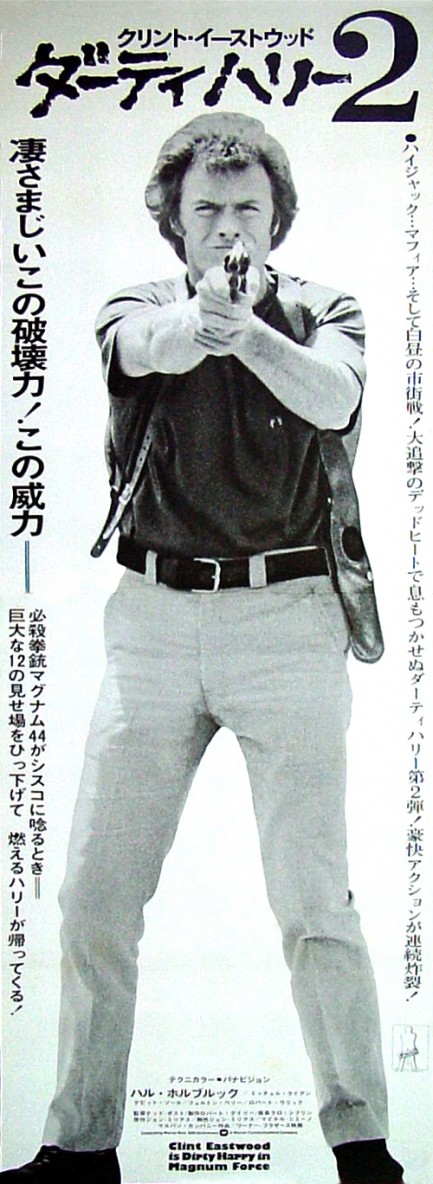
While we’re on the subject of screen legends, here’s one from a different era—Clint Eastwood, on a Japanese poster for Magnum Force, second installment in his five-part Dirty Harry franchise. Having watched Eastwood’s middle-aged disciplinarian Harry Callahan bust caps on various hapless San Francisco miscreants in installment one, seeing him begin to understand in chapter two that corruption starts at the top feels like witnessing major personal growth. It’s just the realization you’d expect him to have given the time period—America’s cherry had been popped by Watergate and Callahan now personified the country's fresh understanding of reality. The series would eventually loose steam, but Magnum Force strikes a balance between the old reactionary Callahan and the new mature one that makes the film the best in the franchise, in our opinion. It opened in the U.S. thirty-seven years ago this month.

|
 |

The headlines that mattered yesteryear.
2003—Hope Dies
Film legend Bob Hope dies of pneumonia two months after celebrating his 100th birthday. 1945—Churchill Given the Sack
In spite of admiring Winston Churchill as a great wartime leader, Britons elect
Clement Attlee the nation's new prime minister in a sweeping victory for the Labour Party over the Conservatives. 1952—Evita Peron Dies
Eva Duarte de Peron, aka Evita, wife of the president of the Argentine Republic, dies from cancer at age 33. Evita had brought the working classes into a position of political power never witnessed before, but was hated by the nation's powerful military class. She is lain to rest in Milan, Italy in a secret grave under a nun's name, but is eventually returned to Argentina for reburial beside her husband in 1974. 1943—Mussolini Calls It Quits
Italian dictator Benito Mussolini steps down as head of the armed forces and the government. It soon becomes clear that Il Duce did not relinquish power voluntarily, but was forced to resign after former Fascist colleagues turned against him. He is later installed by Germany as leader of the Italian Social Republic in the north of the country, but is killed by partisans in 1945.
|

|
|

It's easy. We have an uploader that makes it a snap. Use it to submit your art, text, header, and subhead. Your post can be funny, serious, or anything in between, as long as it's vintage pulp. You'll get a byline and experience the fleeting pride of free authorship. We'll edit your post for typos, but the rest is up to you. Click here to give us your best shot.

|
|



 Diana Dors smacks Patrick Allen blurry in 1957's The Long Haul.
Diana Dors smacks Patrick Allen blurry in 1957's The Long Haul. Mob boss George Raft menaces Anne Francis in a promo image made for 1954's Rogue Cop.
Mob boss George Raft menaces Anne Francis in a promo image made for 1954's Rogue Cop. Bud Abbott gets aggressive with Lou Costello in 1945's Here Come the Co-Eds.
Bud Abbott gets aggressive with Lou Costello in 1945's Here Come the Co-Eds. Jo Morrow takes one from black hat Jack Hogan in 1959's The Legend of Tom Dooley.
Jo Morrow takes one from black hat Jack Hogan in 1959's The Legend of Tom Dooley. Chris Robinson and Anita Sands get a couple of things straight about who's on the yearbook committee in Diary of High School Bride.
Chris Robinson and Anita Sands get a couple of things straight about who's on the yearbook committee in Diary of High School Bride. Paul Newman and Ann Blyth agree to disagree in 1957's The Helen Morgan Story.
Paul Newman and Ann Blyth agree to disagree in 1957's The Helen Morgan Story. Verna Lisi shows Umberto Orsini who gives the orders in the 1967 film La ragazza e il generale, aka The Girl and the General.
Verna Lisi shows Umberto Orsini who gives the orders in the 1967 film La ragazza e il generale, aka The Girl and the General. What the fuck did you just call me? Marki Bey slaps Betty Anne Rees loopy in the 1974 horror flick Sugar Hill.
What the fuck did you just call me? Marki Bey slaps Betty Anne Rees loopy in the 1974 horror flick Sugar Hill. Claudia Cardinale slaps (or maybe punches—we can't remember) Brigitte Bardot in the 1971 western Les pétroleuses, known in English for some reason as The Legend of Frenchie King.
Claudia Cardinale slaps (or maybe punches—we can't remember) Brigitte Bardot in the 1971 western Les pétroleuses, known in English for some reason as The Legend of Frenchie King. Audrey Totter reels under the attentions of Richard Basehart in 1949 Tension. We're thinking it was probably even more tense after this moment.
Audrey Totter reels under the attentions of Richard Basehart in 1949 Tension. We're thinking it was probably even more tense after this moment. Anne Baxter tries to no avail to avoid a slap from heel Steve Cochran in 1954's Carnival Story.
Anne Baxter tries to no avail to avoid a slap from heel Steve Cochran in 1954's Carnival Story.
 Though Alan Ladd was a little guy who Gail Russell probably could have roughed up if she wanted, the script called for him to slap her, and he obeyed in the 1946 adventure Calcutta.
Though Alan Ladd was a little guy who Gail Russell probably could have roughed up if she wanted, the script called for him to slap her, and he obeyed in the 1946 adventure Calcutta. Peter Alexander guards his right cheek, therefore Hannelore Auer crosses him up and attacks his left in 1964's Schwejk's Flegeljahre, aka Schweik's Years of Indiscretion.
Peter Alexander guards his right cheek, therefore Hannelore Auer crosses him up and attacks his left in 1964's Schwejk's Flegeljahre, aka Schweik's Years of Indiscretion. Elizabeth Ashley gives Roddy McDowall a facial in in 1965's The Third Day.
Elizabeth Ashley gives Roddy McDowall a facial in in 1965's The Third Day. Tony Anthony slaps Lucretia Love in 1972's Piazza pulita, aka Pete, Pearl and the Pole.
Tony Anthony slaps Lucretia Love in 1972's Piazza pulita, aka Pete, Pearl and the Pole. André Oumansky goes backhand on Lola Albright in 1964's Joy House.
André Oumansky goes backhand on Lola Albright in 1964's Joy House. Frank Ferguson catches one from Barbara Bel Geddes in the 1949 drama Caught.
Frank Ferguson catches one from Barbara Bel Geddes in the 1949 drama Caught. This looks like a real slap, so you have to credit the actresses for their commitment. It's from 1961's Raisin in the Sun and shows Claudia McNeil rearranging the face of Diana Sands.
This looks like a real slap, so you have to credit the actresses for their commitment. It's from 1961's Raisin in the Sun and shows Claudia McNeil rearranging the face of Diana Sands. Gloria Grahame finds herself cornered by Broderick Crawford in 1954's Human Desire.
Gloria Grahame finds herself cornered by Broderick Crawford in 1954's Human Desire. Bette Davis, an experienced slapper and slappee, gets a little assistance from an unidentified third party as she goes Old West on Amanda Blake in a 1966 episode of Gunsmoke called “The Jailer.”
Bette Davis, an experienced slapper and slappee, gets a little assistance from an unidentified third party as she goes Old West on Amanda Blake in a 1966 episode of Gunsmoke called “The Jailer.” There are a few slaps in 1939's Gone with the Wind, so we had our pick. We went with Vivien Leigh and Leslie Howard.
There are a few slaps in 1939's Gone with the Wind, so we had our pick. We went with Vivien Leigh and Leslie Howard. Virginia Field takes one on the chin from Marshall Thompson in Dial 1119.
Virginia Field takes one on the chin from Marshall Thompson in Dial 1119. Clint Eastwood absorbs a right cross from nun Shirley MacLaine in 1970's Two Mules for Sister Sara.
Clint Eastwood absorbs a right cross from nun Shirley MacLaine in 1970's Two Mules for Sister Sara.


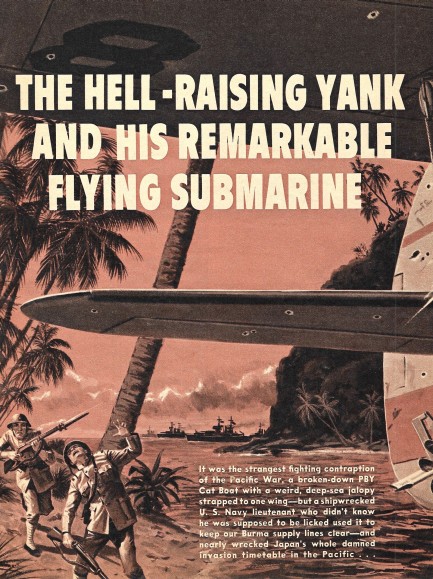
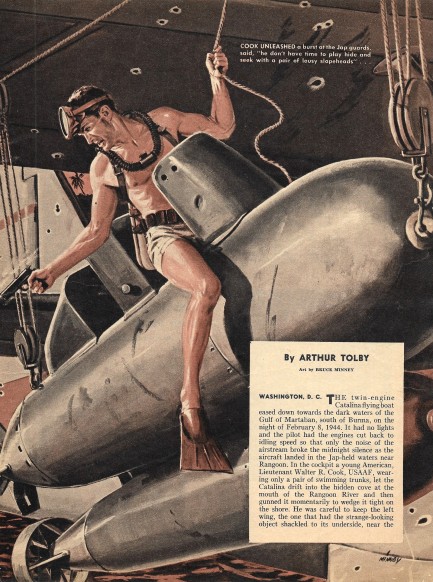
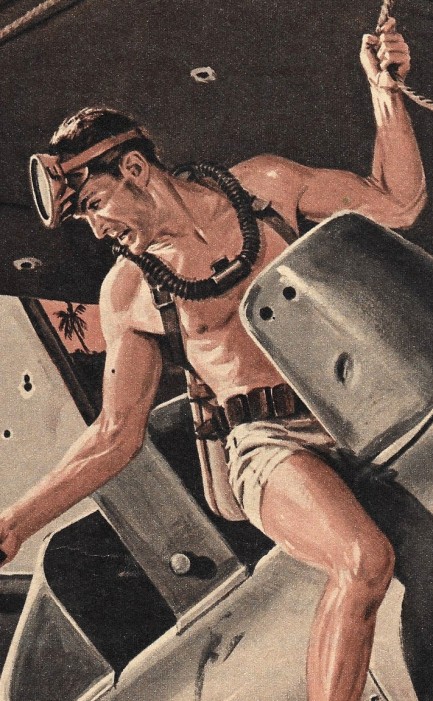
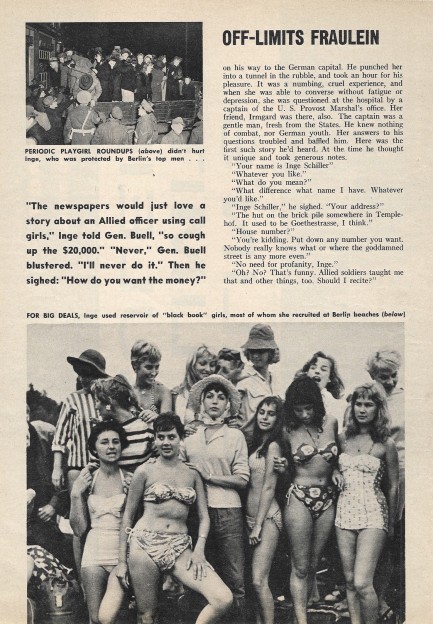

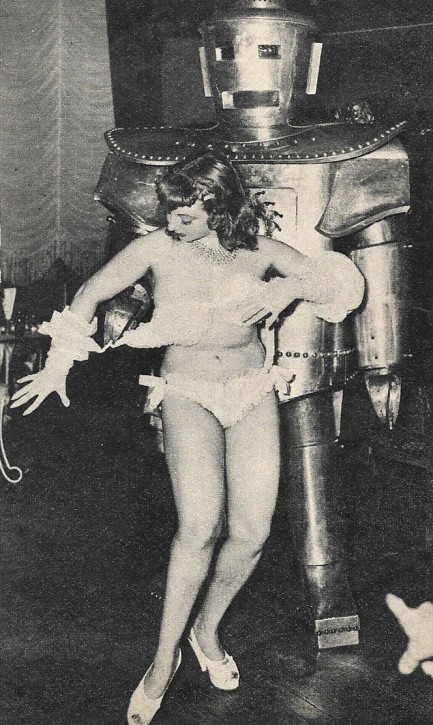

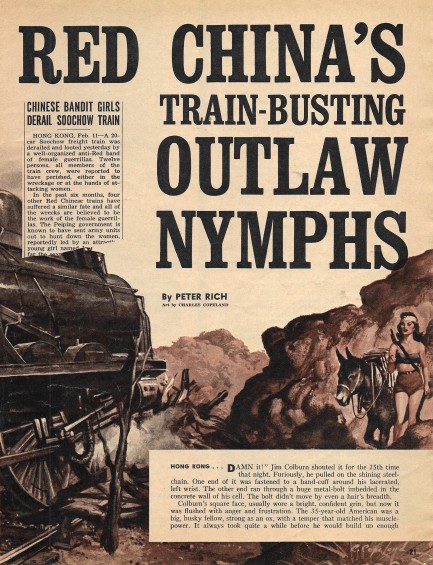


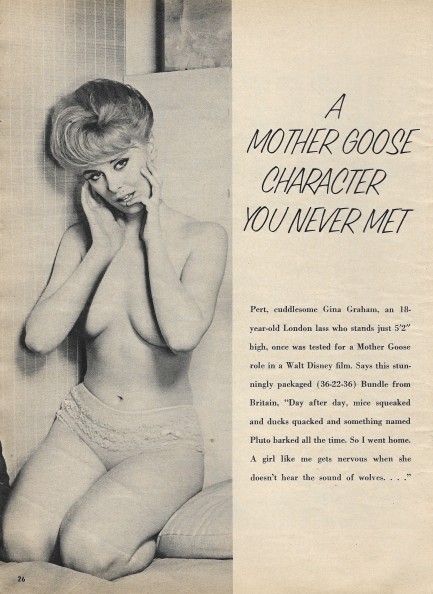
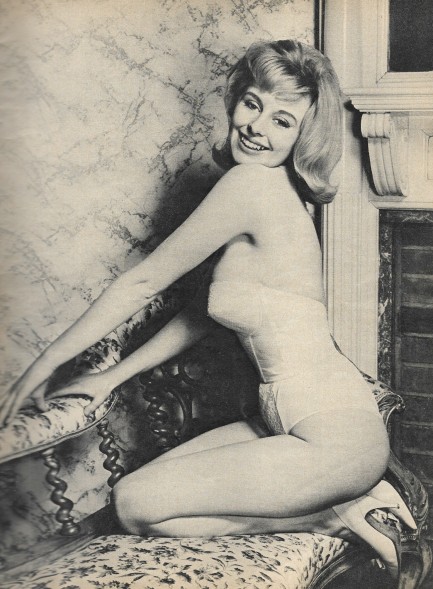

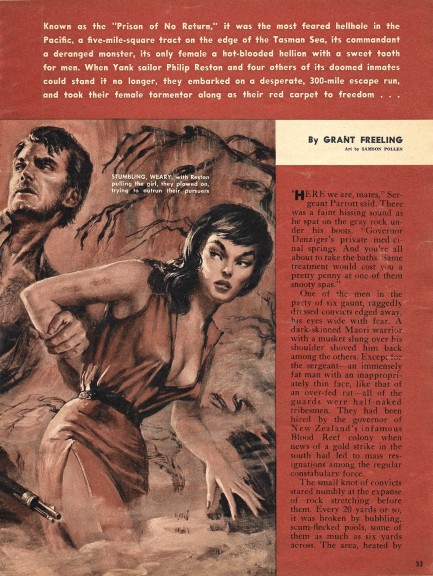
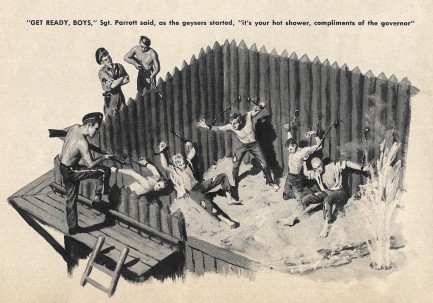
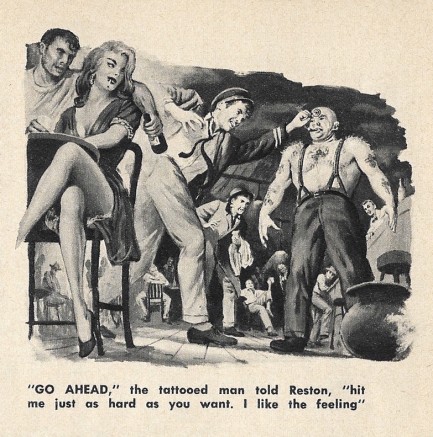

























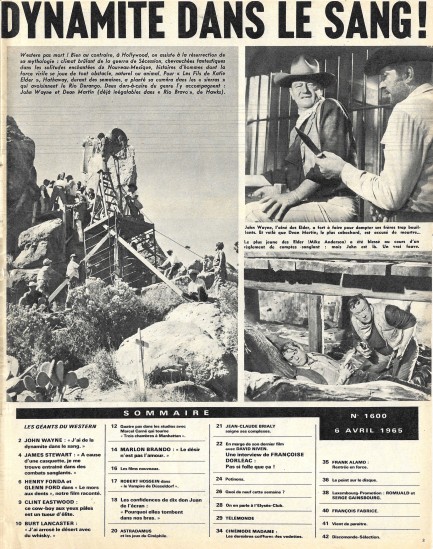
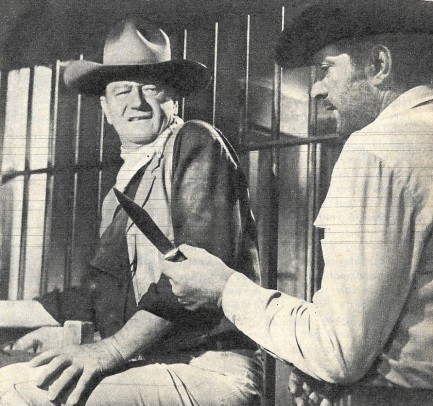
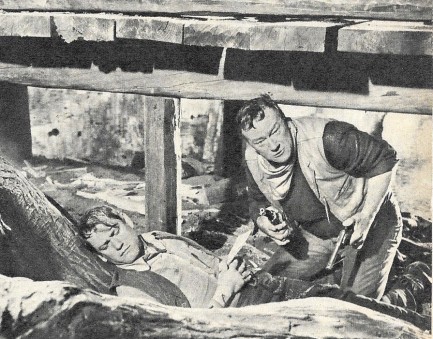
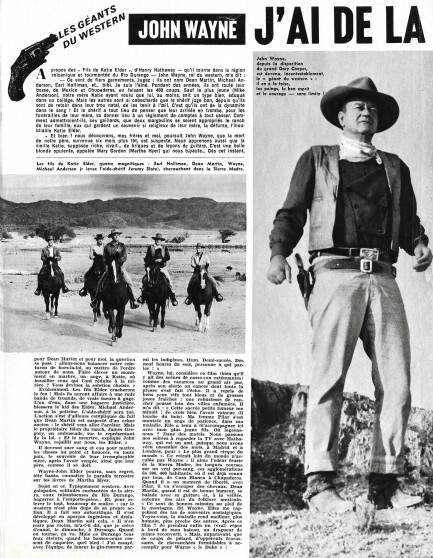
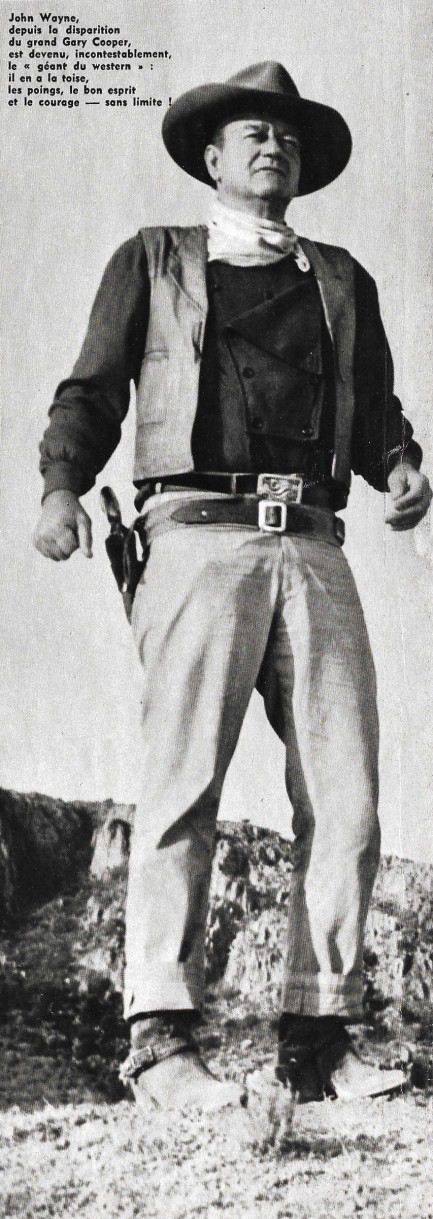
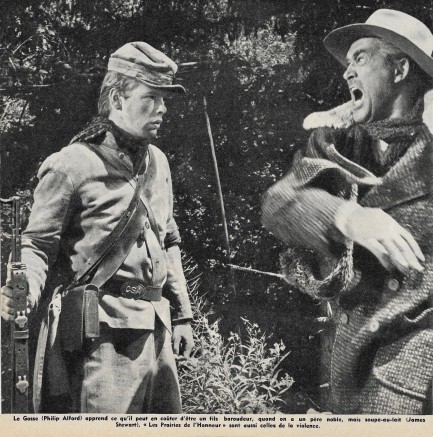
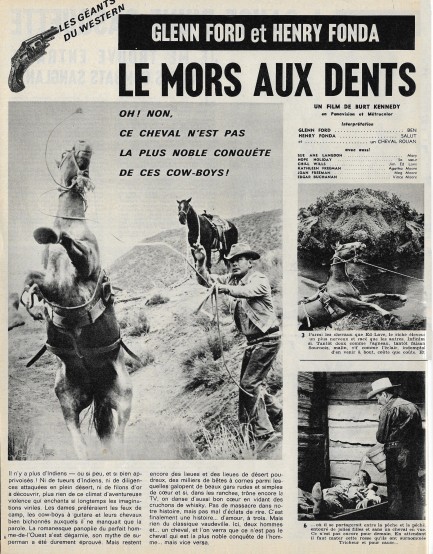
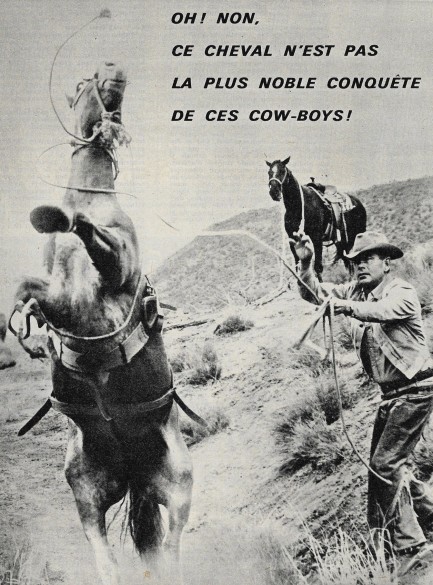
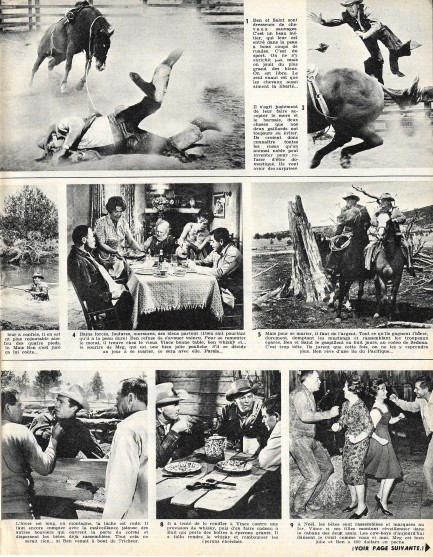
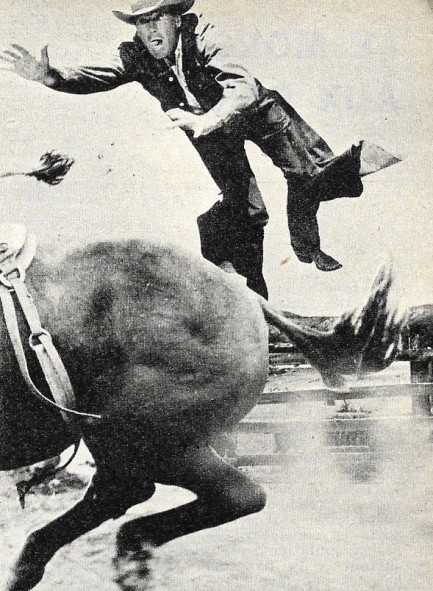
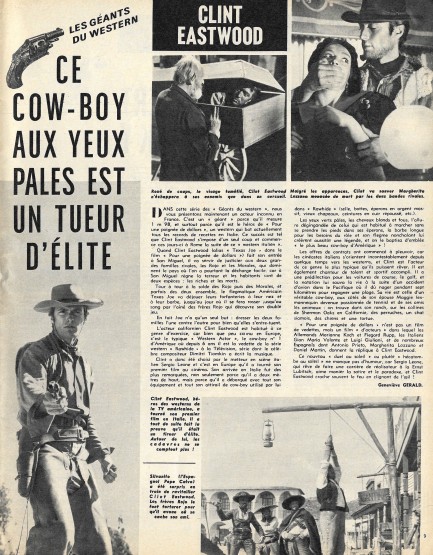
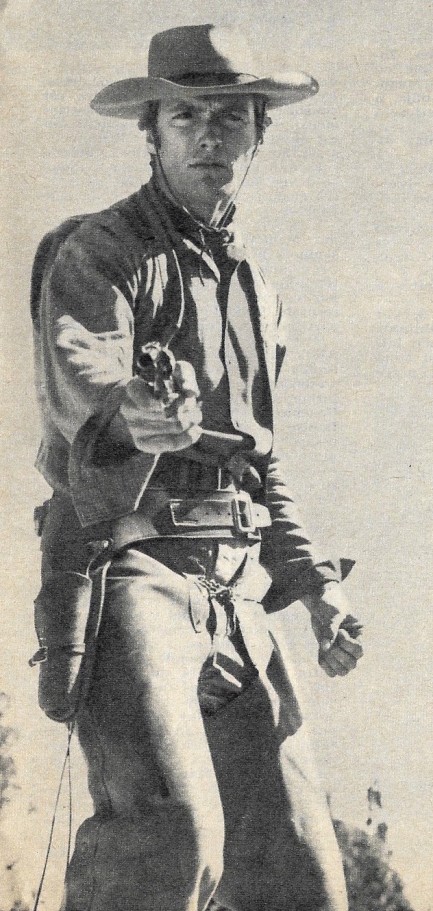
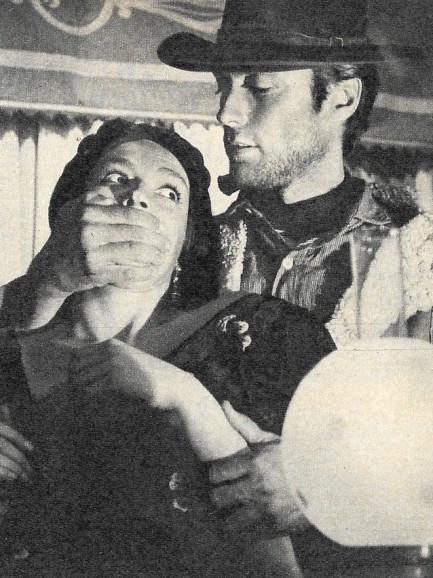
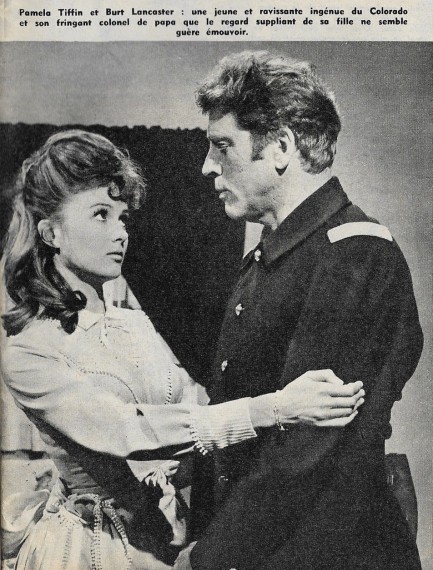
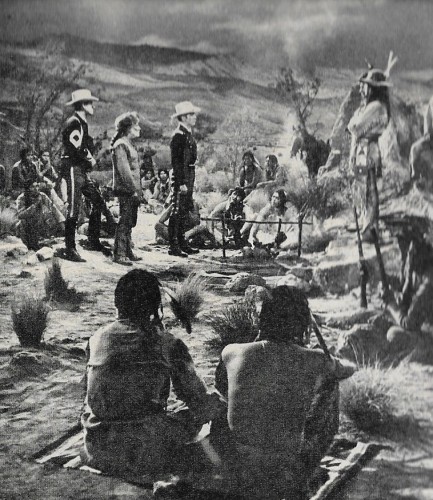
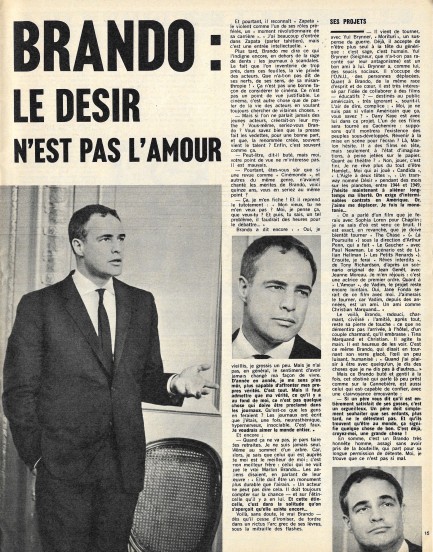
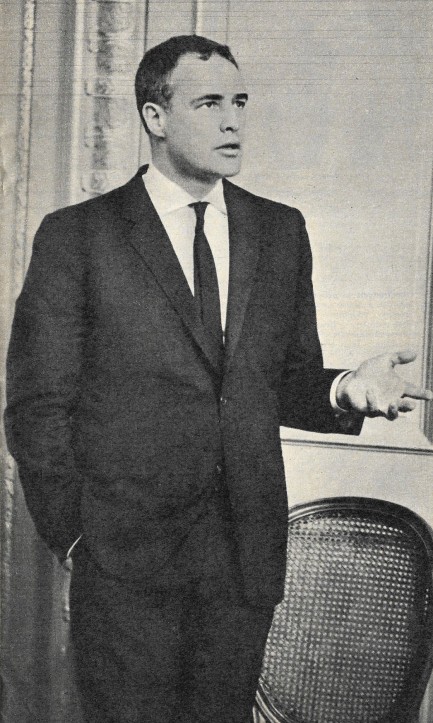
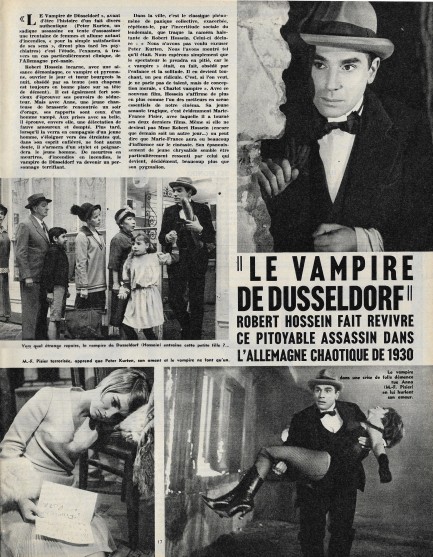
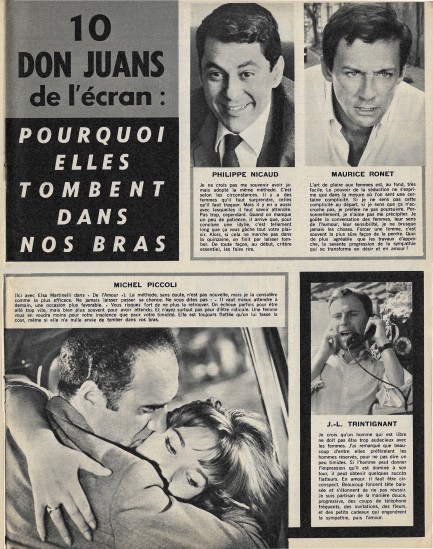
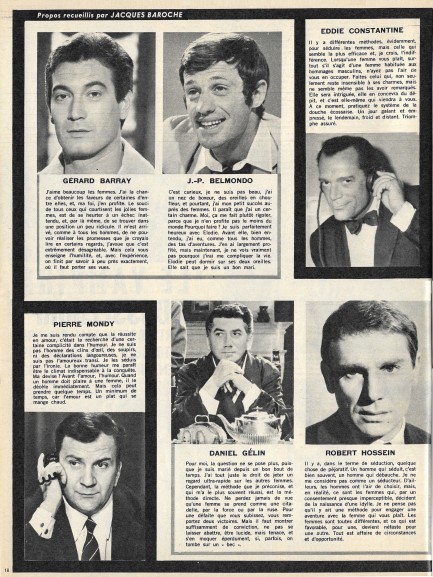
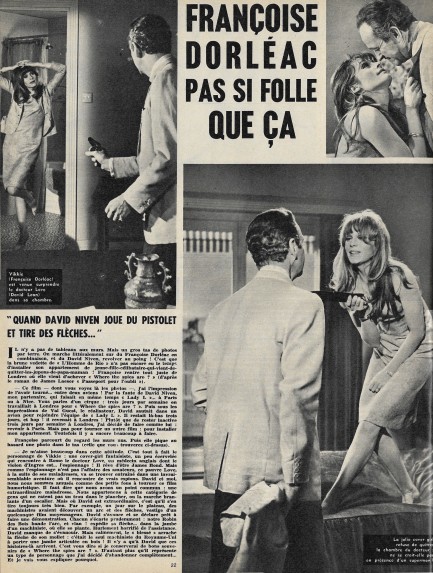
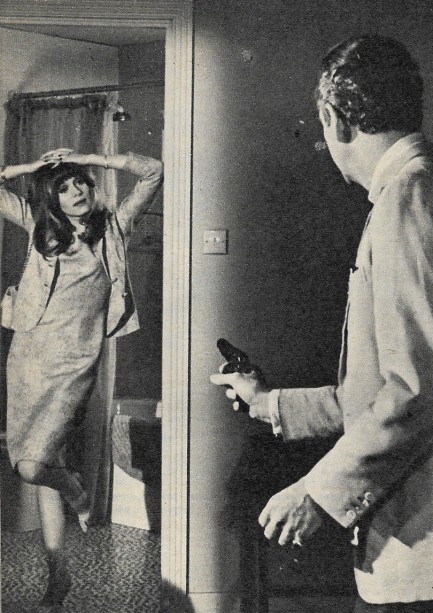
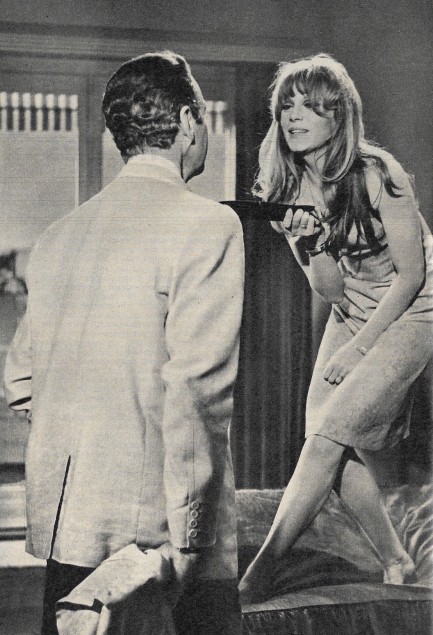
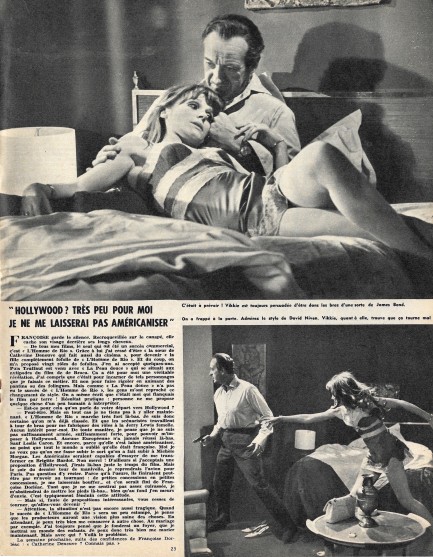

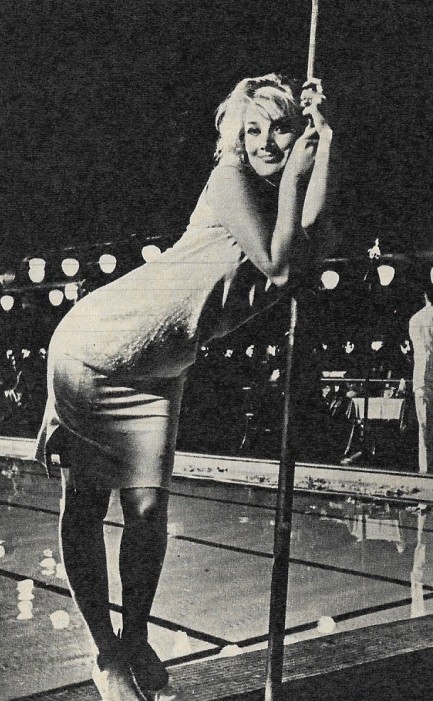

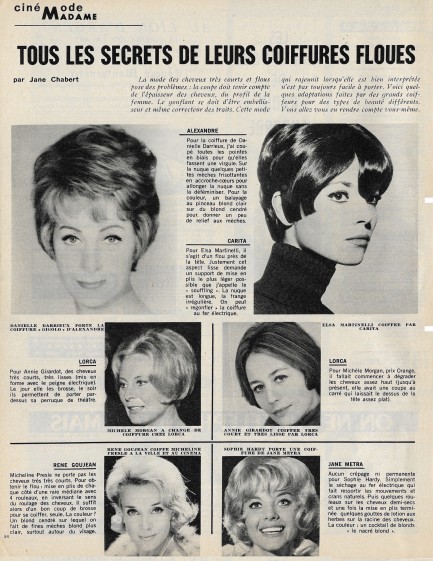
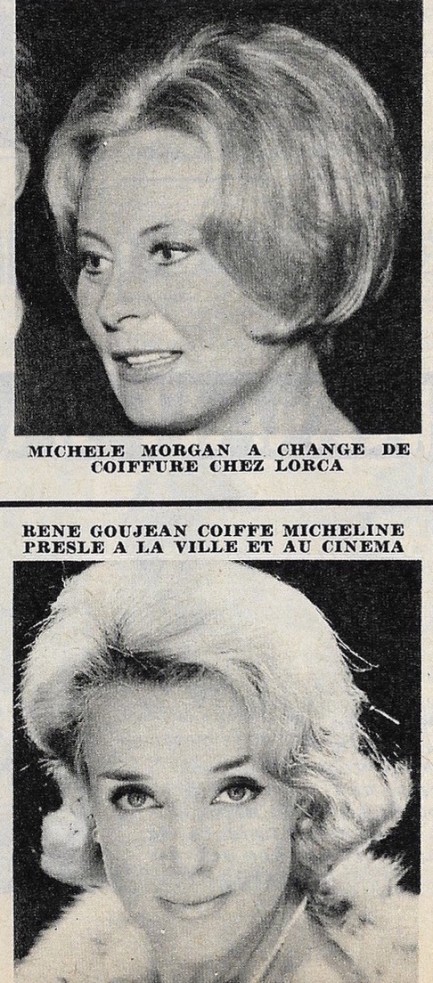
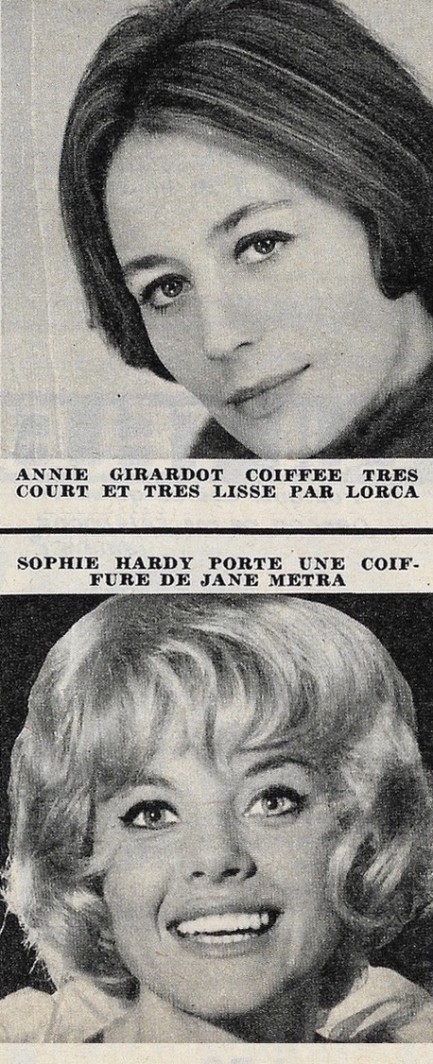
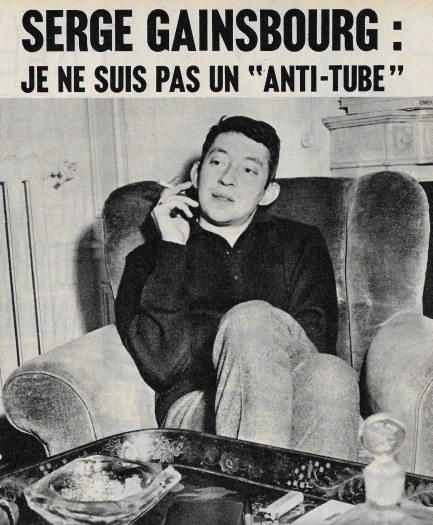
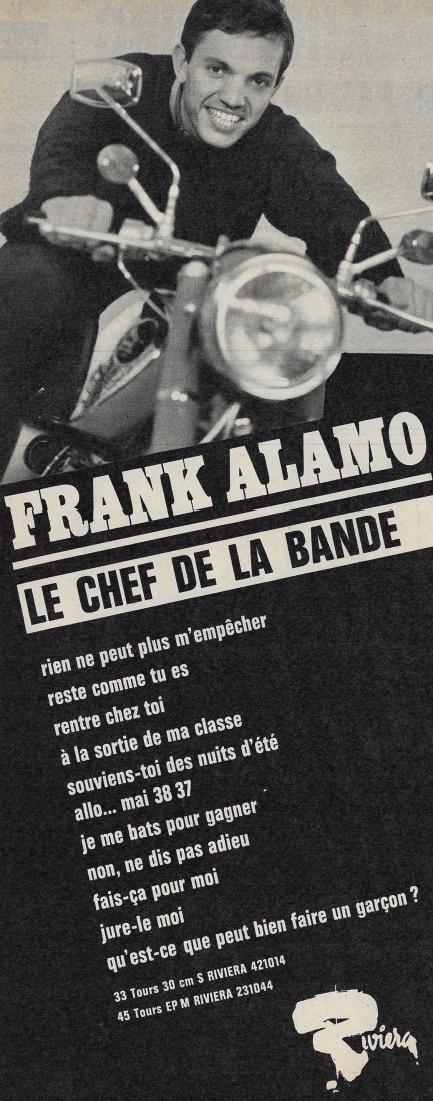
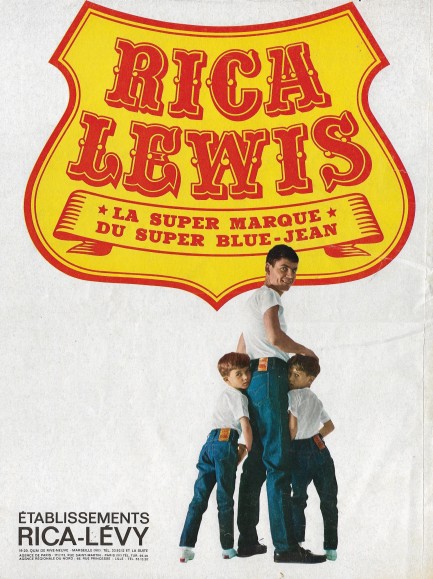





 finished product at film festivals and share the restorer's unique dedication with the world. Meanwhile Sad Hill will become not only a tourist attraction for people passing through the province of Burgos, but a destination for those who contributed to its renewal. As Oliveira commented, “It’s the only cemetery in the world where you can visit your own grave.”
finished product at film festivals and share the restorer's unique dedication with the world. Meanwhile Sad Hill will become not only a tourist attraction for people passing through the province of Burgos, but a destination for those who contributed to its renewal. As Oliveira commented, “It’s the only cemetery in the world where you can visit your own grave.”

 rude—like someone raised on mobile devices, only decades before those existed for people to focus their ire upon. A constant underlying concern is whether he will finally go too far and get his ass seriously beaten, or maybe even get killed. He's likeable, of course, but he's also a protagonist. If you met him on the street you'd wonder if he was ever dropped on his head as an infant—and then proceed to drop him on his head. And no—he doesn't turn out to be secretly a criminal genius. He's exactly the constant annoyance he seems.
rude—like someone raised on mobile devices, only decades before those existed for people to focus their ire upon. A constant underlying concern is whether he will finally go too far and get his ass seriously beaten, or maybe even get killed. He's likeable, of course, but he's also a protagonist. If you met him on the street you'd wonder if he was ever dropped on his head as an infant—and then proceed to drop him on his head. And no—he doesn't turn out to be secretly a criminal genius. He's exactly the constant annoyance he seems.









